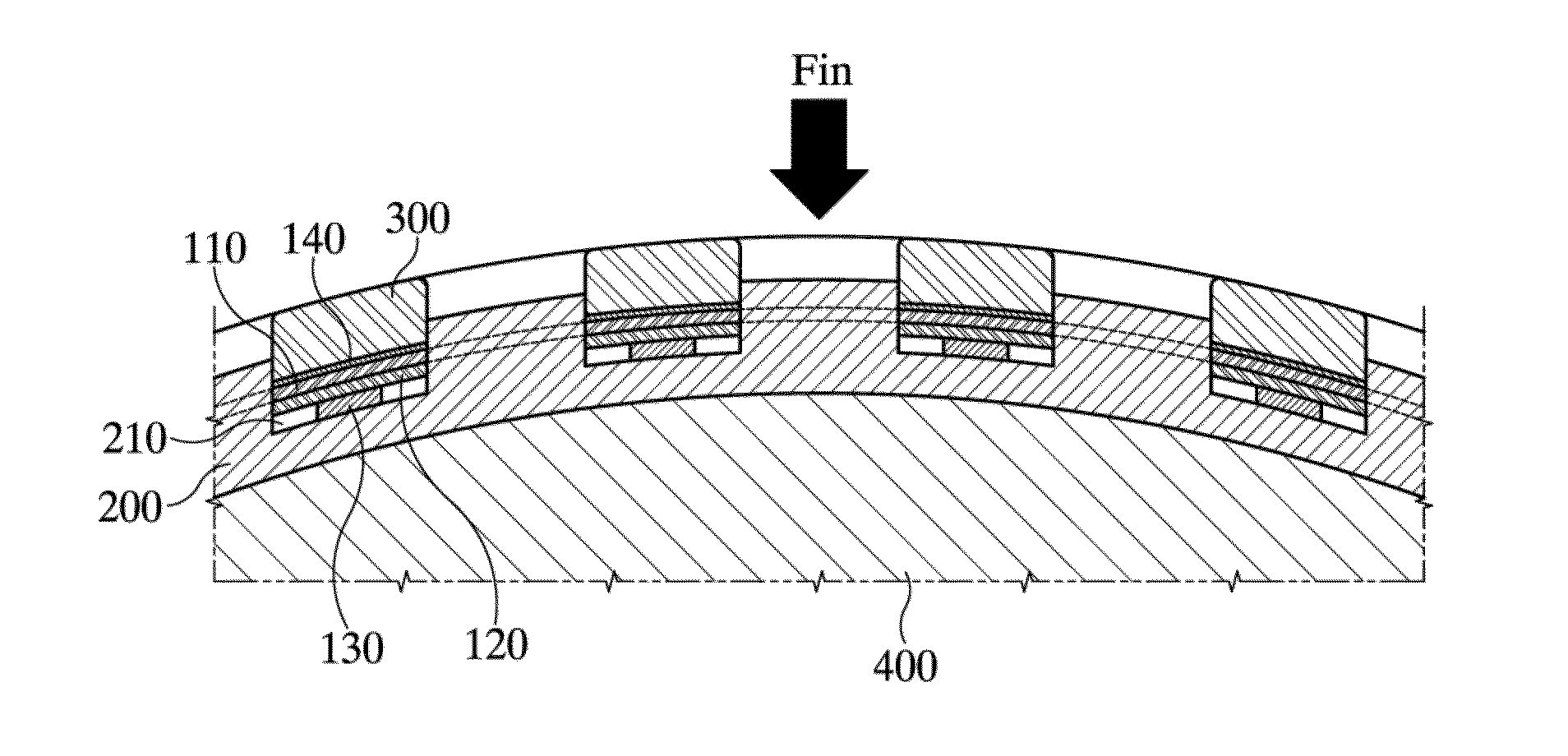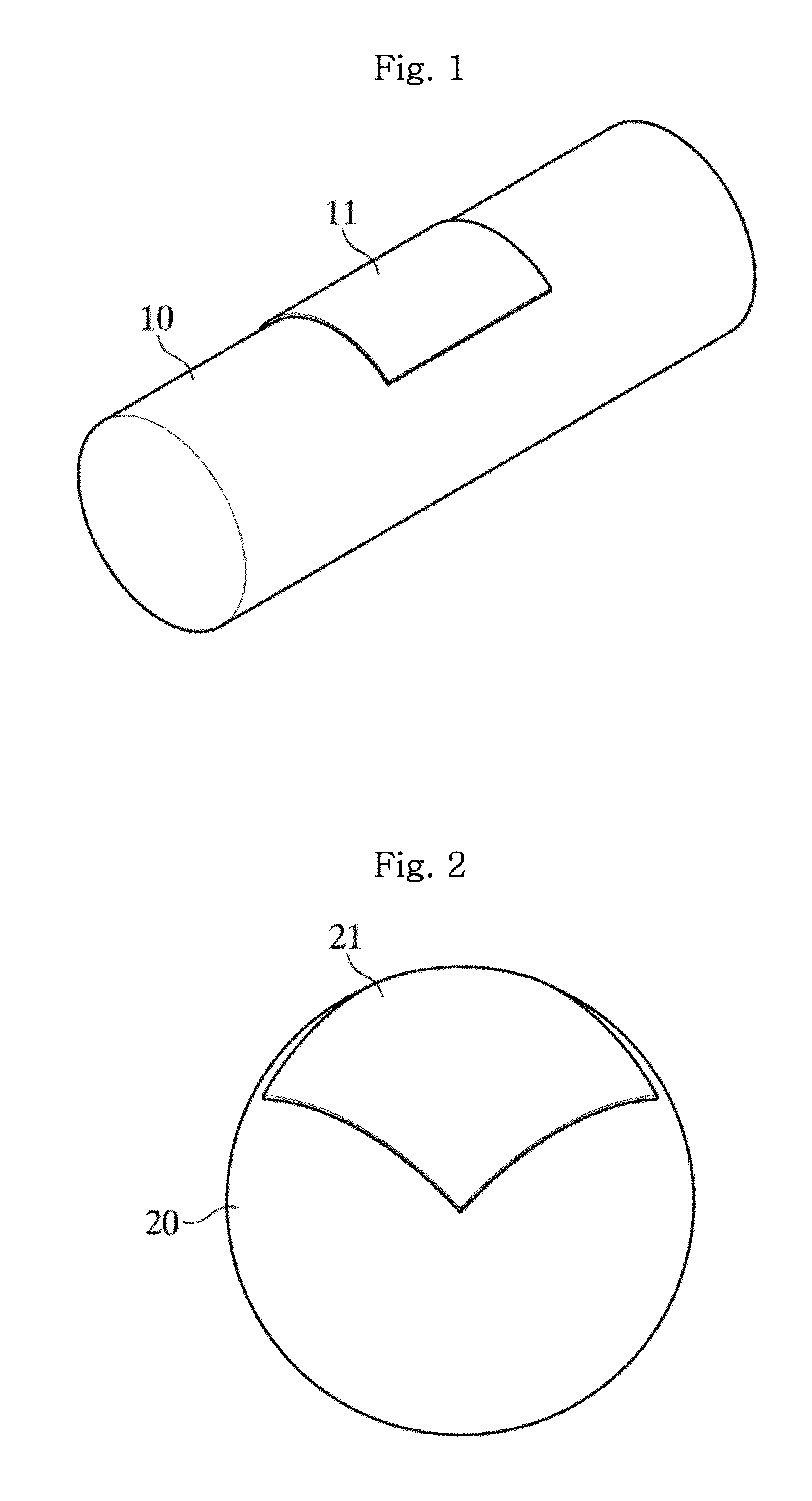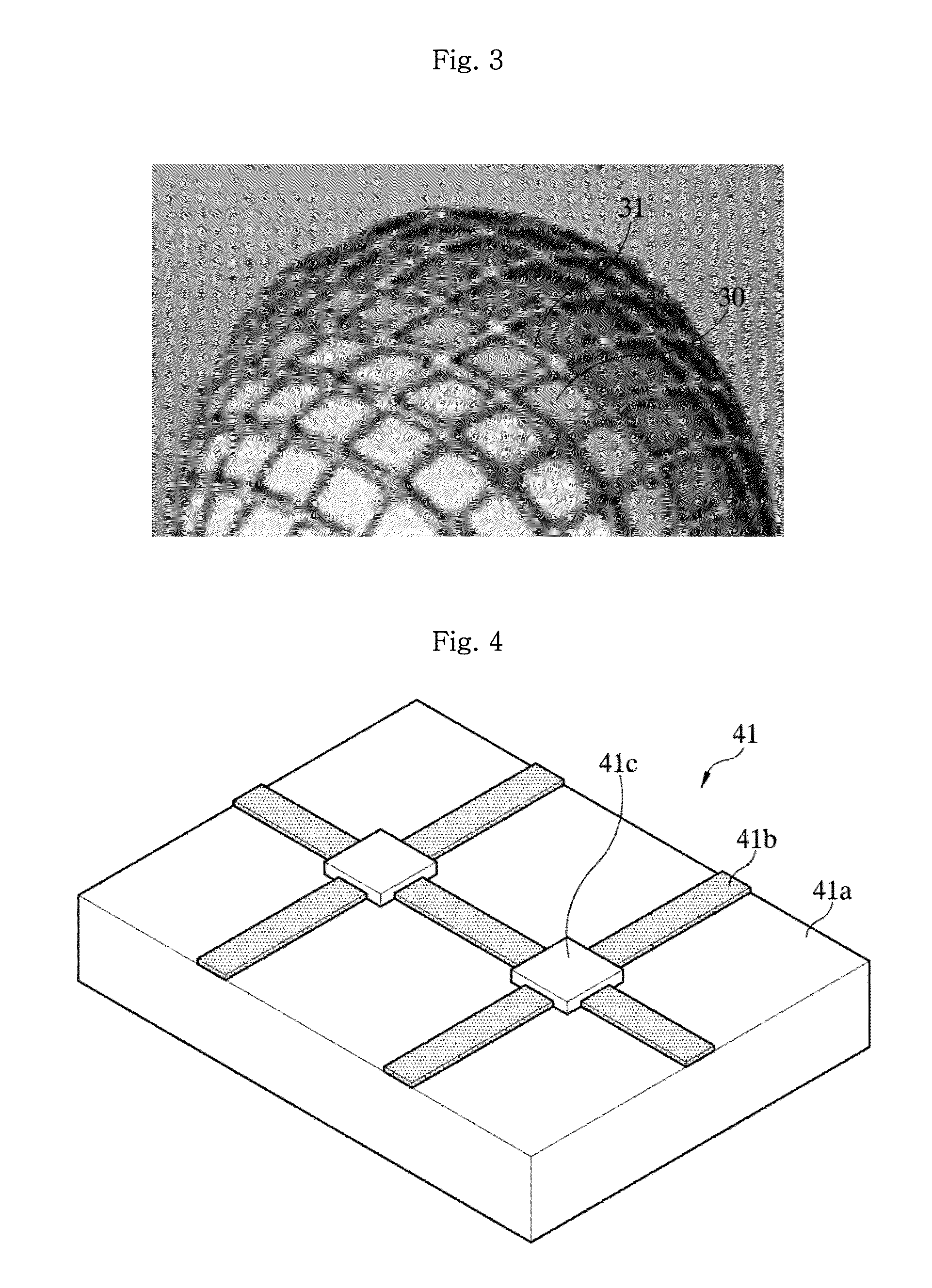Structure and method for attaching tactile sensor to curved surface
a technology of tactile sensors and structures, applied in the direction of force/torque/work measurement apparatus, manufacturing tools, instruments, etc., can solve the problems of not being applied to an organ, tactile sensors without flexibility, and low sensitivity, and achieve the effect of being easily attached to the curved surfa
- Summary
- Abstract
- Description
- Claims
- Application Information
AI Technical Summary
Benefits of technology
Problems solved by technology
Method used
Image
Examples
first embodiment
Manufacturing Method of First Embodiment
[0098]FIG. 14 is a flowchart illustrating a method of attaching tactile sensors to a curved surface according to a first embodiment of the present invention. The method of attaching tactile sensors to a curved surface according to the first embodiment of the present invention is described in detail below with reference to FIGS. 5 to 8 and 14.
[0099]The method of attaching tactile sensors to a curved surface according to the first embodiment of the present invention chiefly includes a temperature sensor unit insertion step (S110), a tactile sensor unit insertion step, a sealing step (S140), a locking unit coupling step (S150), and a support unit insertion step (S160).
[0100]First, in the temperature sensor unit insertion step (S110), the temperature sensor units 140 are inserted into the respective sensor insertion grooves 210 of the sensor fixing unit 200 in a row.
[0101]Next, the tactile sensor unit insertion step includes a second sensor layer ...
second embodiment
Manufacturing Method of Second Embodiment
[0108]FIG. 15 is a flowchart illustrating a method of attaching tactile sensors to a curved surface according to a second embodiment of the present invention. The method of attaching tactile sensors to a curved surface according to the second embodiment of the present invention is described in detail below with reference to FIGS. 9 to 11 and 15.
[0109]The method of attaching tactile sensors to a curved surface according to the second embodiment of the present invention chiefly includes a tactile sensor unit insertion step, a temperature sensor unit insertion step (S230), a sealing step (S240), a locking unit coupling step (S250), and a support unit insertion step (S260).
[0110]The tactile sensor unit insertion step includes a second sensor layer insertion step (S210) and a first sensor layer insertion step (S220). First, in the second sensor layer insertion step (S210), the second sensor layer 120 is inserted into the sensor insertion groove 21...
PUM
| Property | Measurement | Unit |
|---|---|---|
| contact resistance method | aaaaa | aaaaa |
| piezoelectric material | aaaaa | aaaaa |
| pressure | aaaaa | aaaaa |
Abstract
Description
Claims
Application Information
 Login to View More
Login to View More - R&D
- Intellectual Property
- Life Sciences
- Materials
- Tech Scout
- Unparalleled Data Quality
- Higher Quality Content
- 60% Fewer Hallucinations
Browse by: Latest US Patents, China's latest patents, Technical Efficacy Thesaurus, Application Domain, Technology Topic, Popular Technical Reports.
© 2025 PatSnap. All rights reserved.Legal|Privacy policy|Modern Slavery Act Transparency Statement|Sitemap|About US| Contact US: help@patsnap.com



